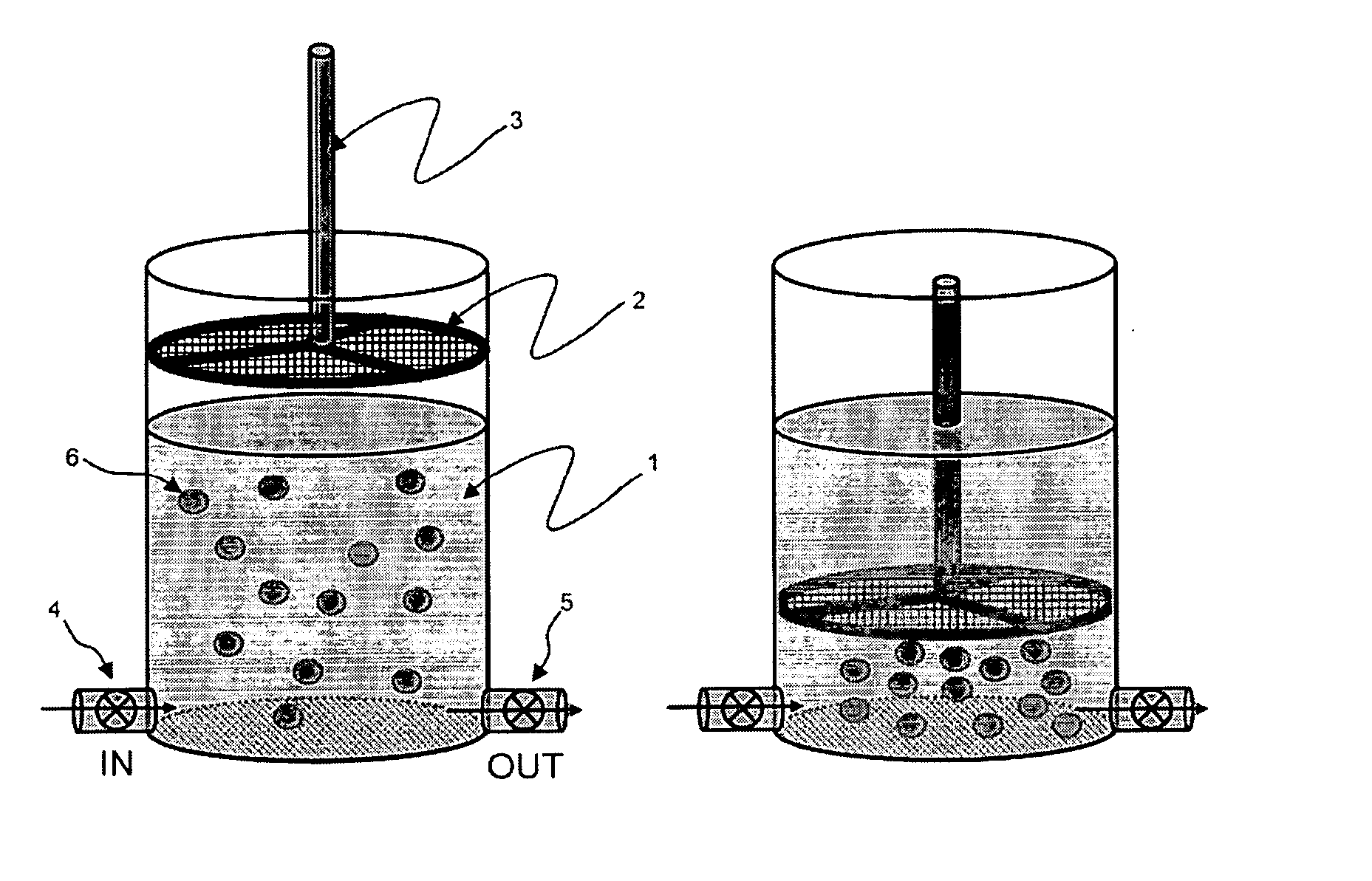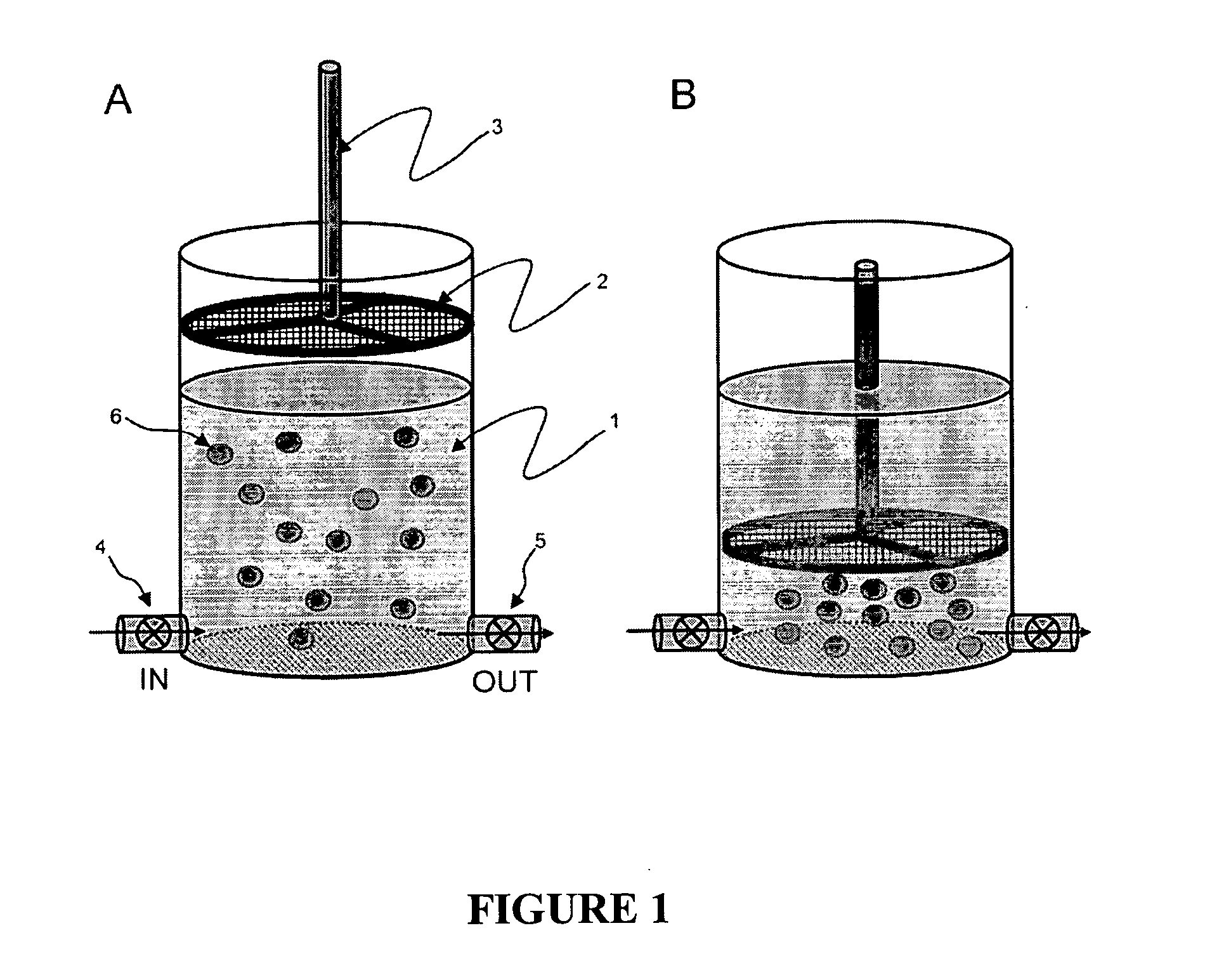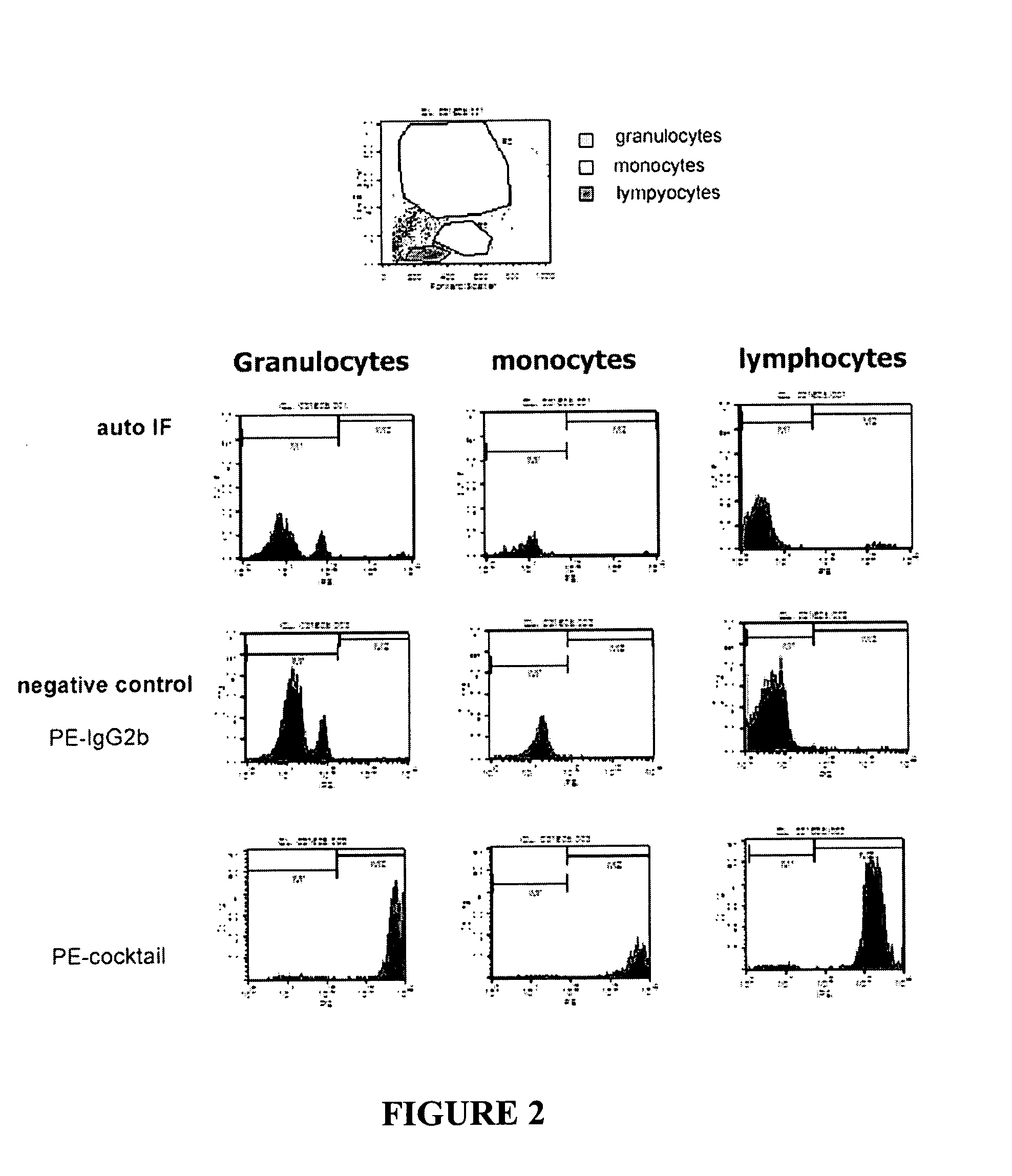Methods and compositions for detecting rare cells from a biological sample
a biological sample and rare cell technology, applied in the field of biological sample processing to detect rare cells, can solve the problems of no longer expressing an expected surface antigen, approaches can miss rare cells,
- Summary
- Abstract
- Description
- Claims
- Application Information
AI Technical Summary
Benefits of technology
Problems solved by technology
Method used
Image
Examples
example 1
Enrichment and Analysis of Cancer Cells from a Blood Sample
[0259] Materials and Methods
[0260] Affinity-purified anti-CD50 monoclonal antibody was obtained from Aviva System Biology (San Diego, Calif.). Normal human blood collected in anti-coagulant ACD tubes were provided by Advanced Biosciences Resource (Alameda, Calif.). NHS Biotin and DAPI were purchased from Pierce (Rockford, Ill.) and Invitrogen (Carlsbad, Calif.), respectively. Avidin coated magnetic beads were generated in house. FITC-anti-CD31 and PE-anti-CD50 mAbs were from Ancel.
[0261] Examination of CD50 and CD31 Expression on Carcinoma Cell Lines by FACS
[0262] Carcinoma cells from a series of cell lines including human breast cancer (MDA-435S), human colon cancer (DLD-1), human prostate cancer (PC-3), and human cervix cancer (HeLa) were trypsinized, followed by spinning down at 1300 rpm for 5 min. Cells were resuspended in 1% BSA-PBS and aliquoted into a polystyrene FACS tube (Falcon, Product # 352054) to have 1×106 ...
example 2
Detection of Isolated Cancer Cells by Immunofluorescence Using a Combination of Tumor Markers
[0276] Monolayer of enriched cells on slides are immunostained with a mixture of anti-tumor marker mAbs such as anti-CA19.9, anti-cytokeratin and anti-telomerase, labeled with fluorescent dyes, each in a different color, followed by analysis using fluorescence microscopy. Alternatively, immunofluorescence can be indirectly labeled on the antibodies via biotinylation, followed by incubation with fluorescent molecules conjugated to Avidin. In addition, immunofluorescence molecule labeled secondary antibodies are another choice to label the unlabeled primary antibodies recognizing target cells. An example of circulating cancer cells from a patient blood sample identified by this method is illustrated in FIG. 5
example 3
[0277] Detection of Isolated Cancer Cells by Immunofluorescence Using PCR
[0278] Following the enrichment of rare cells, RNA is isolated from those cells using magnetic beads, column based methods, or traditional RNA isolation strategies using guanidium, phenol / chloroform. Reverse transcription of RNA is performed using oligo dt, gene specific and / or random primer to generate cDNA as a template. A PCR, a qPCR or multiplex PCR is subsequently carried out to amplify specific target genes such as tumor markers.
[0279] Reverse transcription buffer was added to the enriched sample comprising the target rare cells. Direct lyses of the cells was performed by heating the enriched samples at 95° C. for 1 min.
[0280] Reverse transcription of RNA using oligo dT, gene specific and / or random primer to generate cDNA:
[0281] Resuspend above isolated lysed rare cell sample with RNA into 11 μl dNTP mixture (1 mM each) and primer (50 μM oligo(dT), 2 μM gene specific primer and / or 50 ng / μl random hexa...
PUM
| Property | Measurement | Unit |
|---|---|---|
| Fraction | aaaaa | aaaaa |
| Fraction | aaaaa | aaaaa |
| Size | aaaaa | aaaaa |
Abstract
Description
Claims
Application Information
 Login to View More
Login to View More - R&D
- Intellectual Property
- Life Sciences
- Materials
- Tech Scout
- Unparalleled Data Quality
- Higher Quality Content
- 60% Fewer Hallucinations
Browse by: Latest US Patents, China's latest patents, Technical Efficacy Thesaurus, Application Domain, Technology Topic, Popular Technical Reports.
© 2025 PatSnap. All rights reserved.Legal|Privacy policy|Modern Slavery Act Transparency Statement|Sitemap|About US| Contact US: help@patsnap.com



